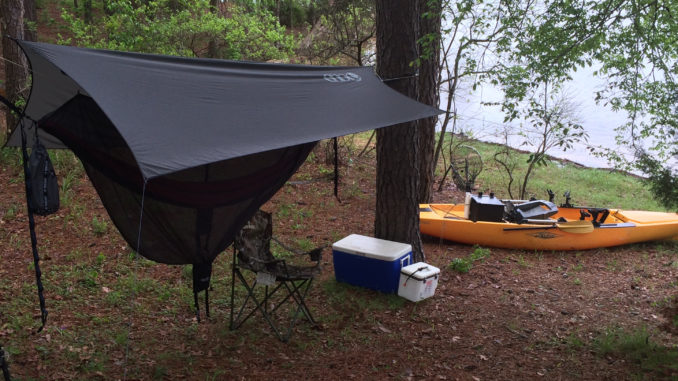
Making an overnight paddling trip? Plan well
Once upon a time, when information was still found in encyclopedias and directions were still derived from paper maps, there were still places of mystery. Not far from my home, we would head to Tar River Reservoir to water ski and swim each weekend day through the summer. My world as far as the Tar River was concerned consisted of a body of water located between a dam, Sapony Creek and a low bridge on Old Carriage Road near the Rocky Mount/Wilson airport.
My dad and I planned a weekend-long canoe trip a few years after I left college, and I wanted to try something different. Dad purchased a copy of “A Paddler’s Guide to Eastern North Carolina” to help plan the excursion.
The next few weeks, we took turns looking through the book and at a map of the eastern part of the state. Most of the time, we looked at them together. Checking such things as average flow rate, types of rapids and locations to put in and take out all came into consideration.
We chose to float the Tar from Spring Hope to the NC 58 bridge. A neighbor and his son joined us, as well as a couple of my friends. We set the date and planned who would bring what for the two-day float and fish.
Without cell phones and GPS, we looked for landmarks such as turns in the river, occasional bridges passing overhead or streams and creeks joining. This way, we could look into our handy book and see about where we were, and whether we needed to paddle more or fish more.
Today’s world is much different. Planning is easier, with satellite imagery, internet forums and mapping software available for free with just a press of a button on a keyboard.
Still, scouting and planning is as much a part of the trip for an overnight stay as it is for a week-long float. This is where much of the fun comes from, as it heightens the excitement value of the fun and tasks ahead.
First, plan your points of entry and exits. For overnight stays, it is usually a prerequisite to have a vehicle drop you and your gear off and then pick you up at a predetermined time at a planned exit location. Unlike going blind a few decades ago, when we only had a few points of interest to base our pace, cell phones and fish finders commonly have GPS built in. Having a specific time for an exit is important as it has a built-in safety factor. If you do not arrive on time, the pick-up person knows to contact authorities if they cannot reach you.
Remember your basics. We all need food, water and shelter to survive. Plan your trip with food and snacks that are easy to get to since there is no guarantee a spot where you thought you could pull up to shore will still be there. Water or drinks can be kept in a hard cooler, a bag cooler or both. Keep the things you will use during the day’s trip in a bag cooler near your seat, while the things you will use later in the trip in the dry cooler.
Pack a small tent and keep it in the hull or in a dry bag. Dry bags are a cheap means to keep gear both dry and floatable in case of an overturned canoe or kayak.
Carry extra gear. Again, dry bags are great for handling extra gear. A sleeping bag and an extra set of clothes can mean the difference between a trip to laugh about for years to come or a trip that has a lasting impact. If an overturn happens or a storm pops up quickly, a night in a tent in wet clothing will be miserable and dangerous. Even during summer, a rainy night with a strong wind can assist with the onset of hypothermia if there is nothing dry to climb into. I speak from experience on this matter.
Also keep a lighter and matches in a small, dry storage container, whether it be a sealable sandwich bag or plastic container with a screw-on lid. Fire provides warmth, light and a signaling beacon in case of an accident.
Never leave home without duct tape. Sounds like a manly man’s slogan, doesn’t it? Yes, but duct tape can be used for so many things it should be an essential part of any trip. Once, floating a river that became shallow much more quickly than we realized, a sharp rock tore a hole in the bottom of one of our kayaks. A small length of duct tape on the underside and inside the hull was enough to allow us to keep paddling with very little water slipping past. Of course, we had to watch the rocks, as the duct tape could easily be ripped, but at that point, we were watching for anything underwater anyway.
Duct tape can be used to help hold and support shelter, even if it is used to tape a tree limb from tree trunk to tree trunk and prop a kayak or canoe on the limb for a lean-to. It can be used to help splint a broken bone or cover a wound. Just ask for anesthesia when emergency personnel are finally able to administer help, as the duct tape is not going to want to come off your skin without a little pain.



Be the first to comment